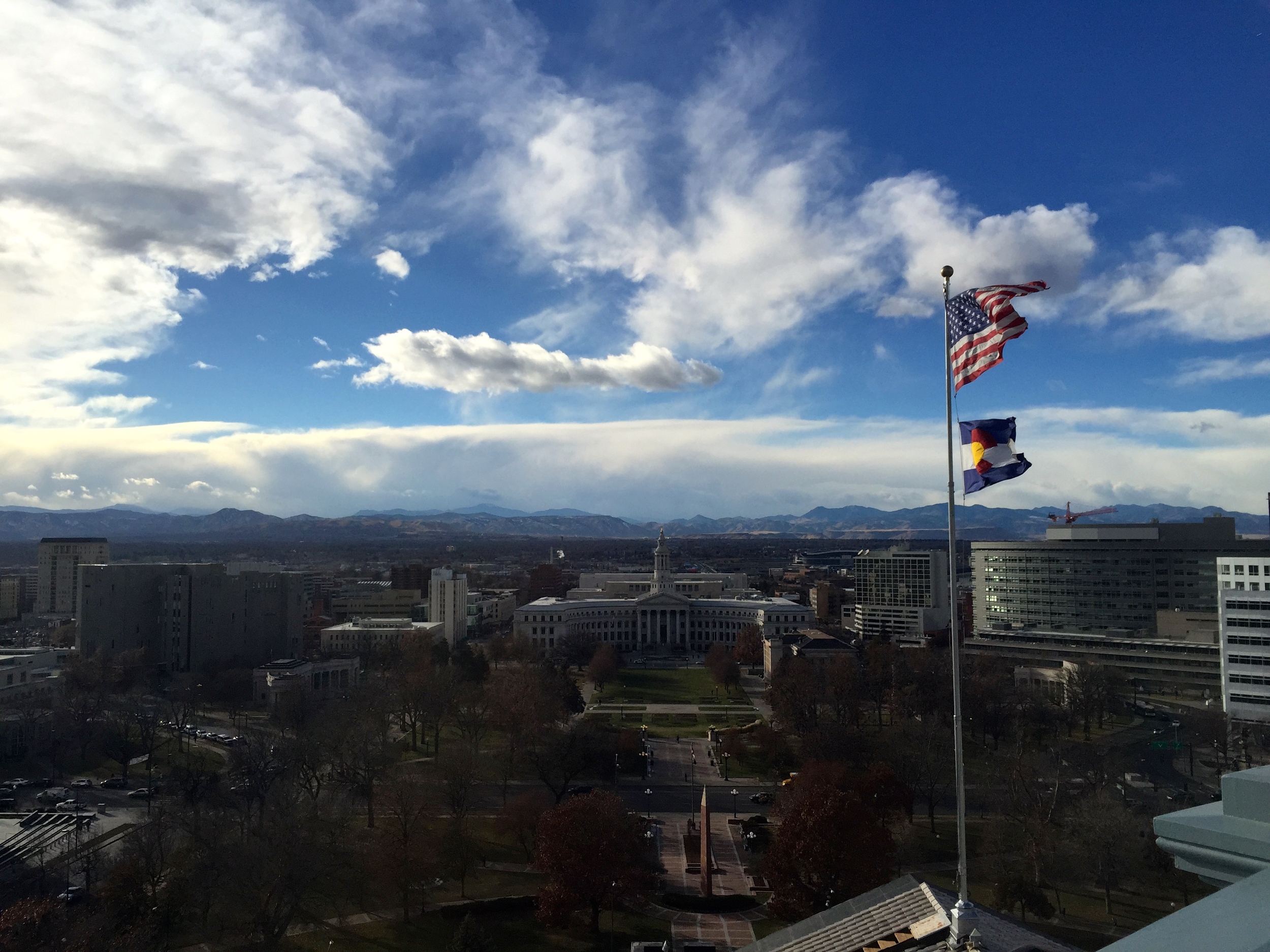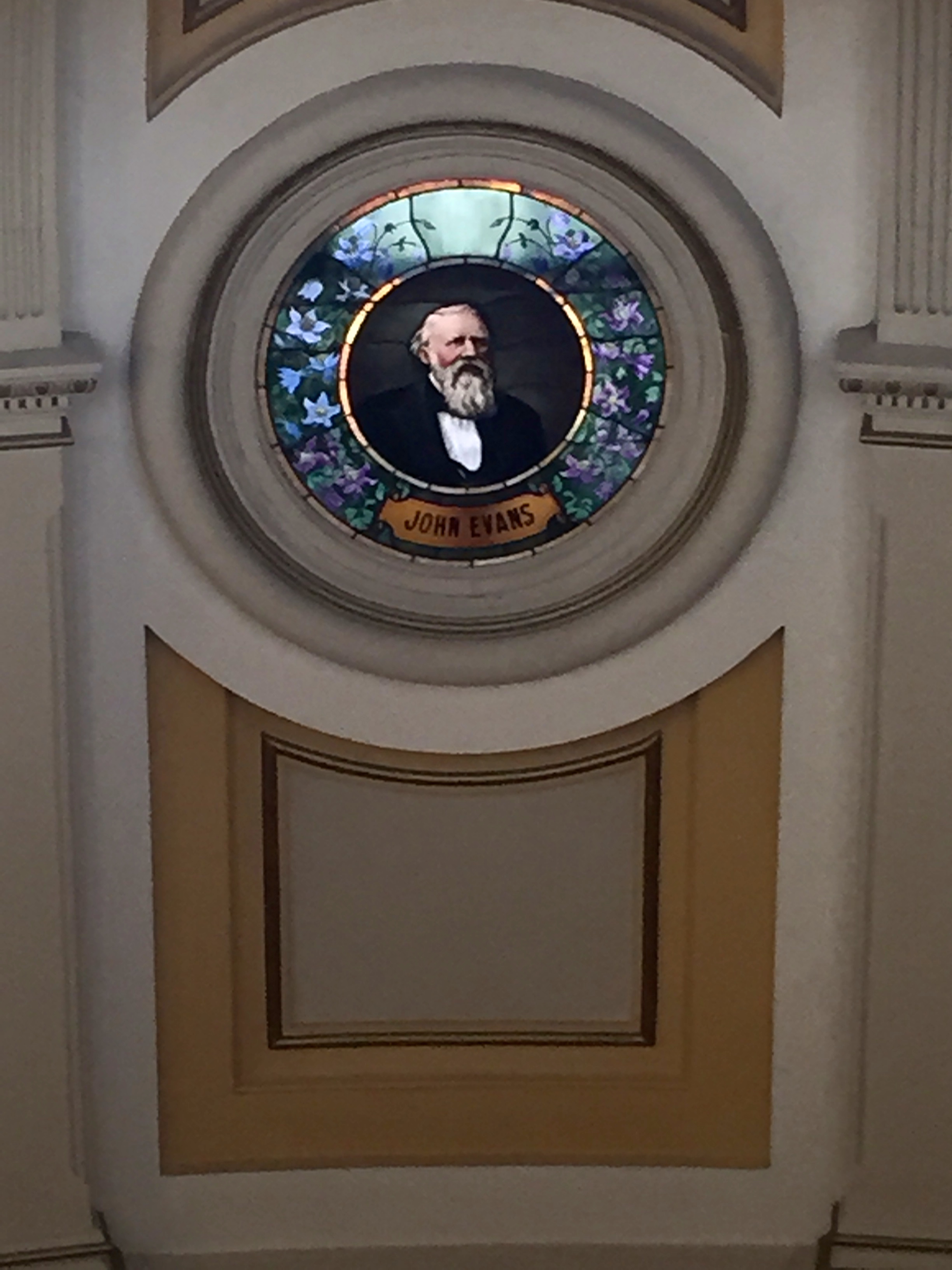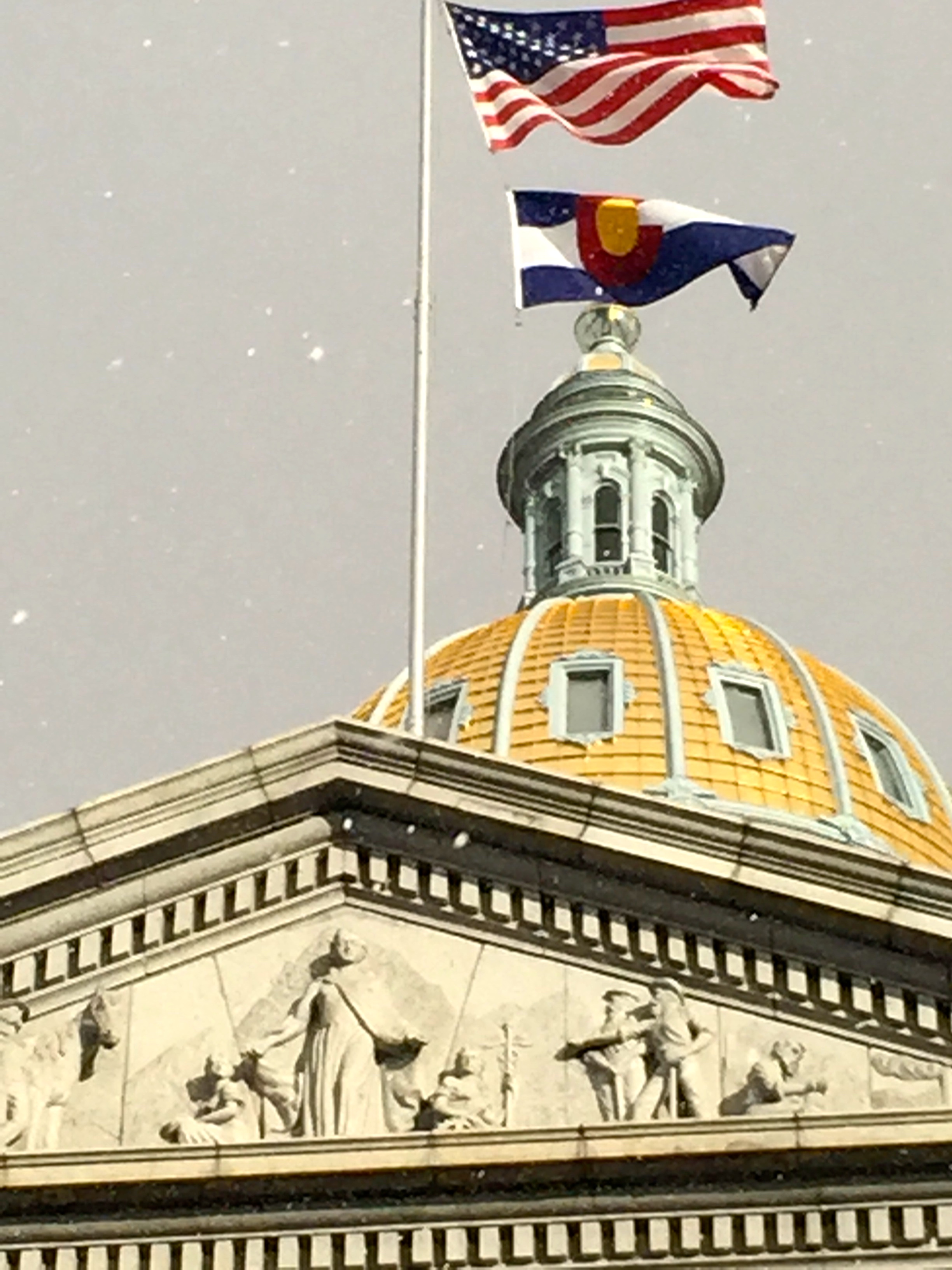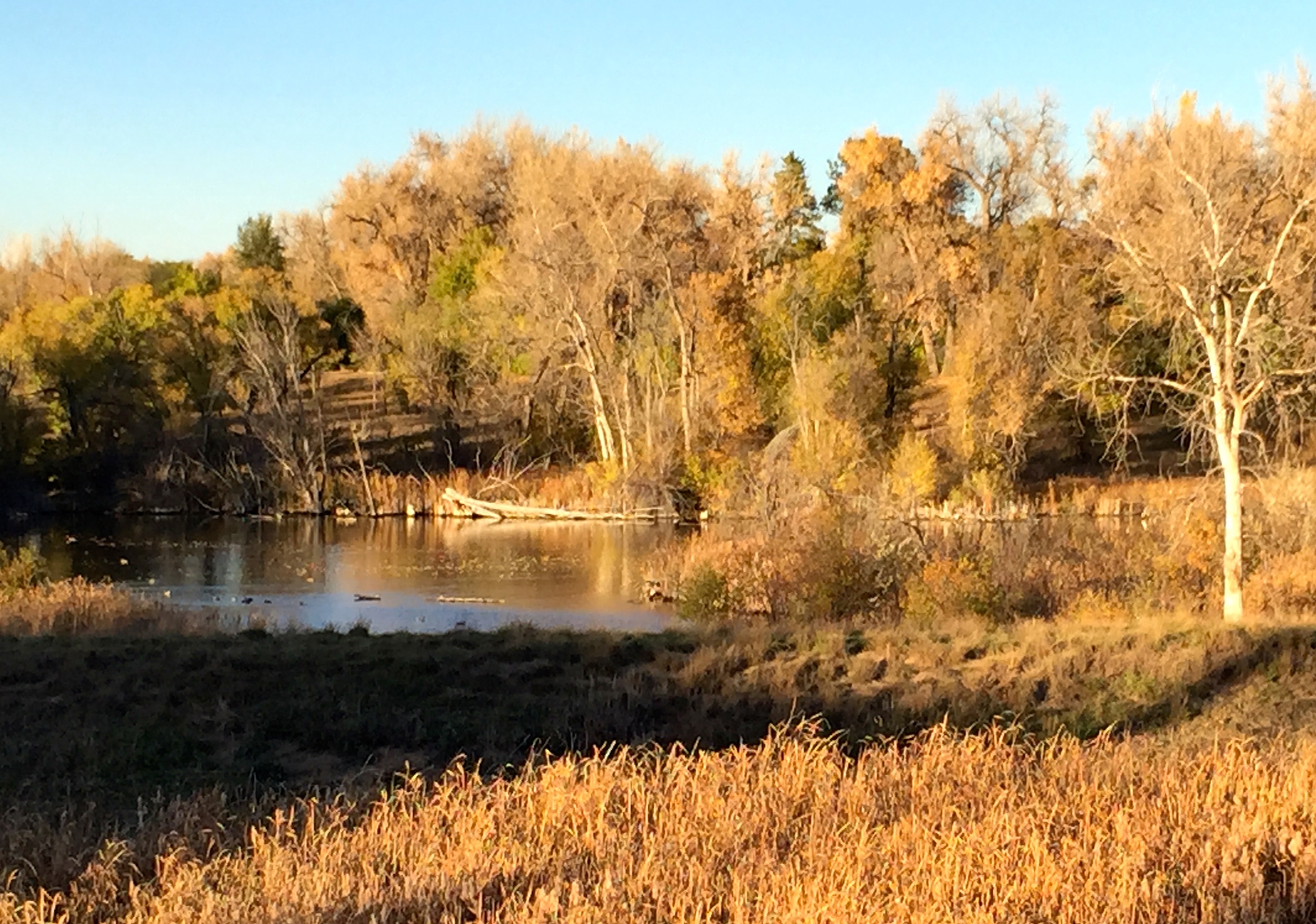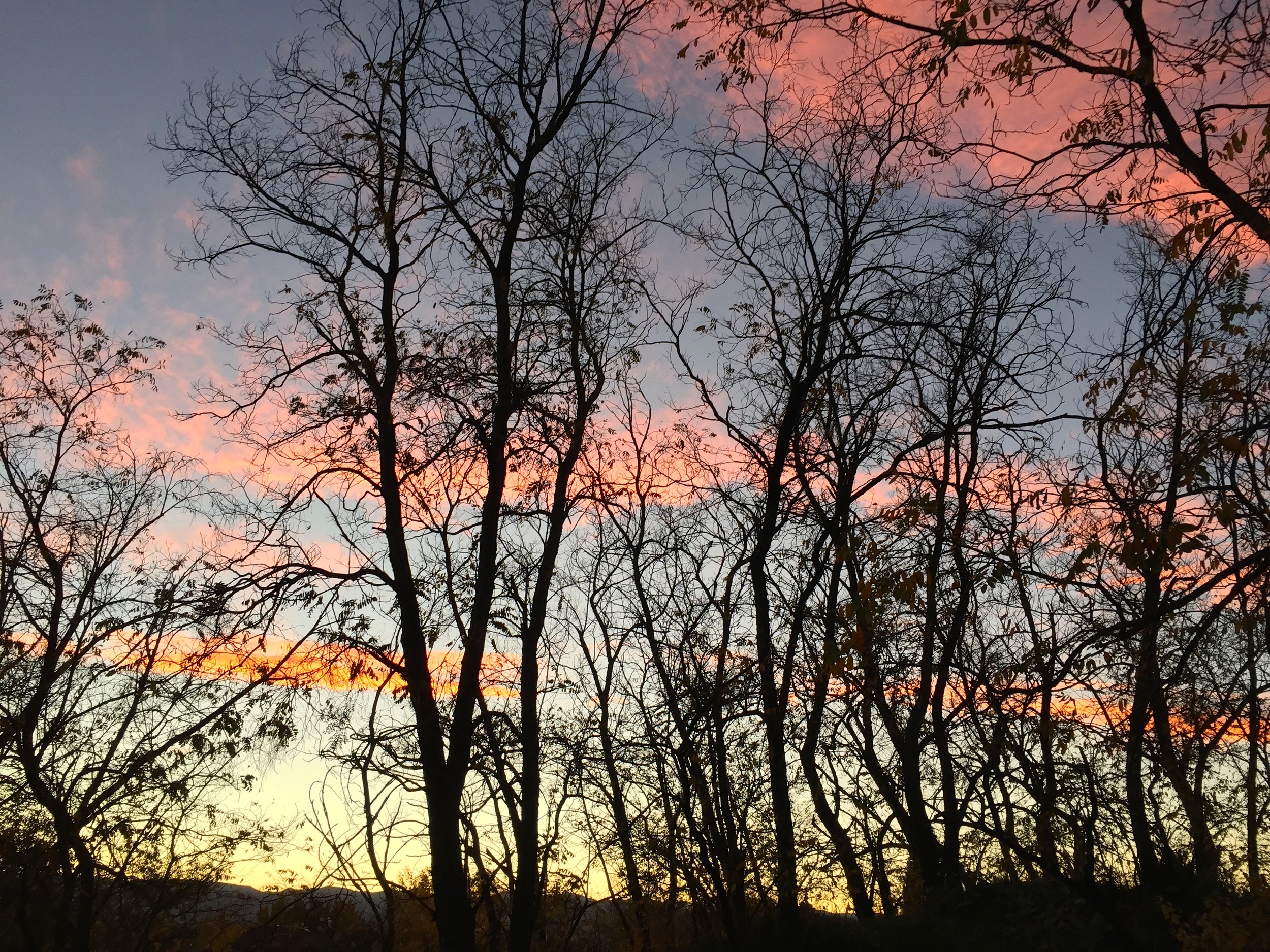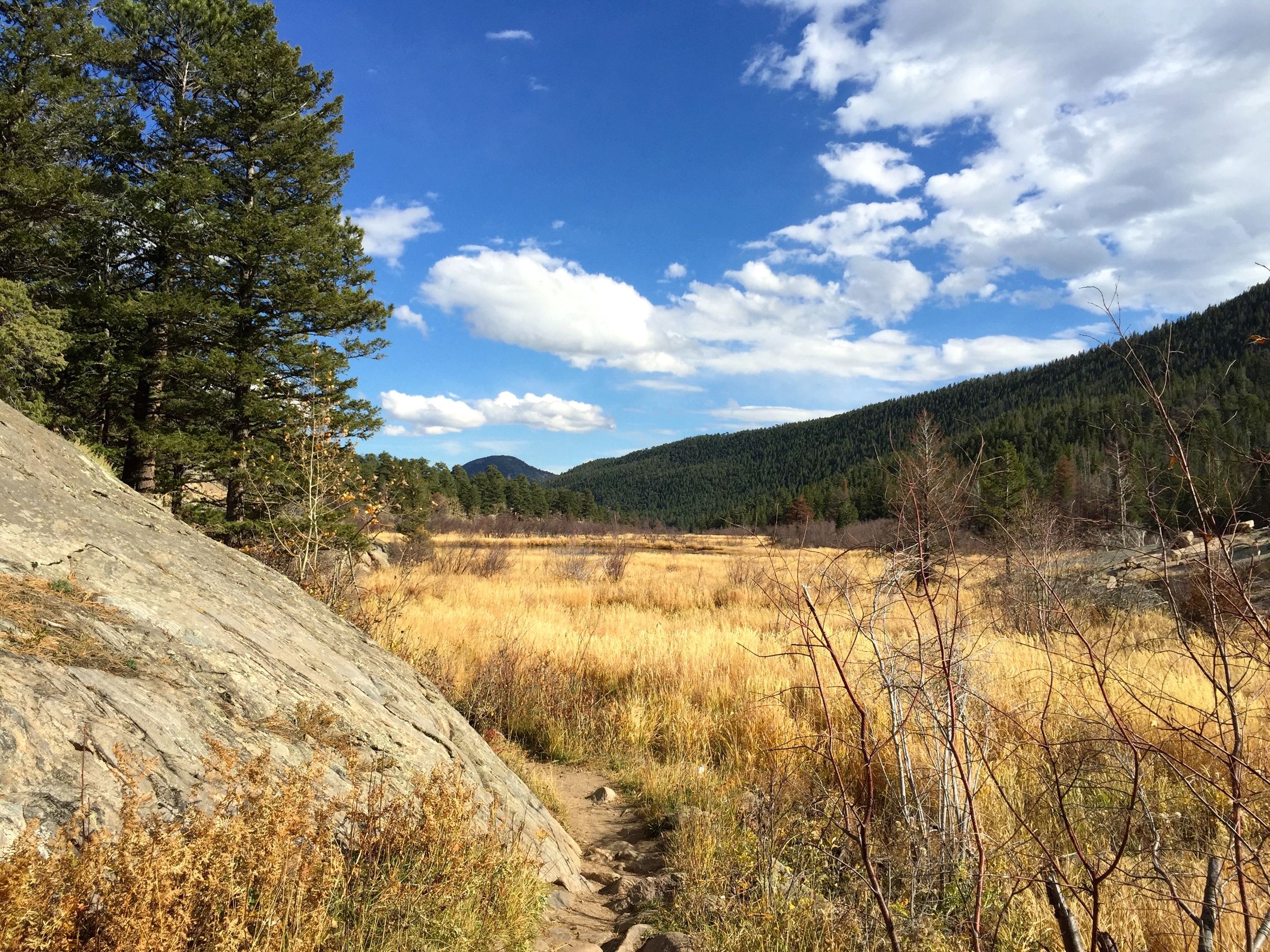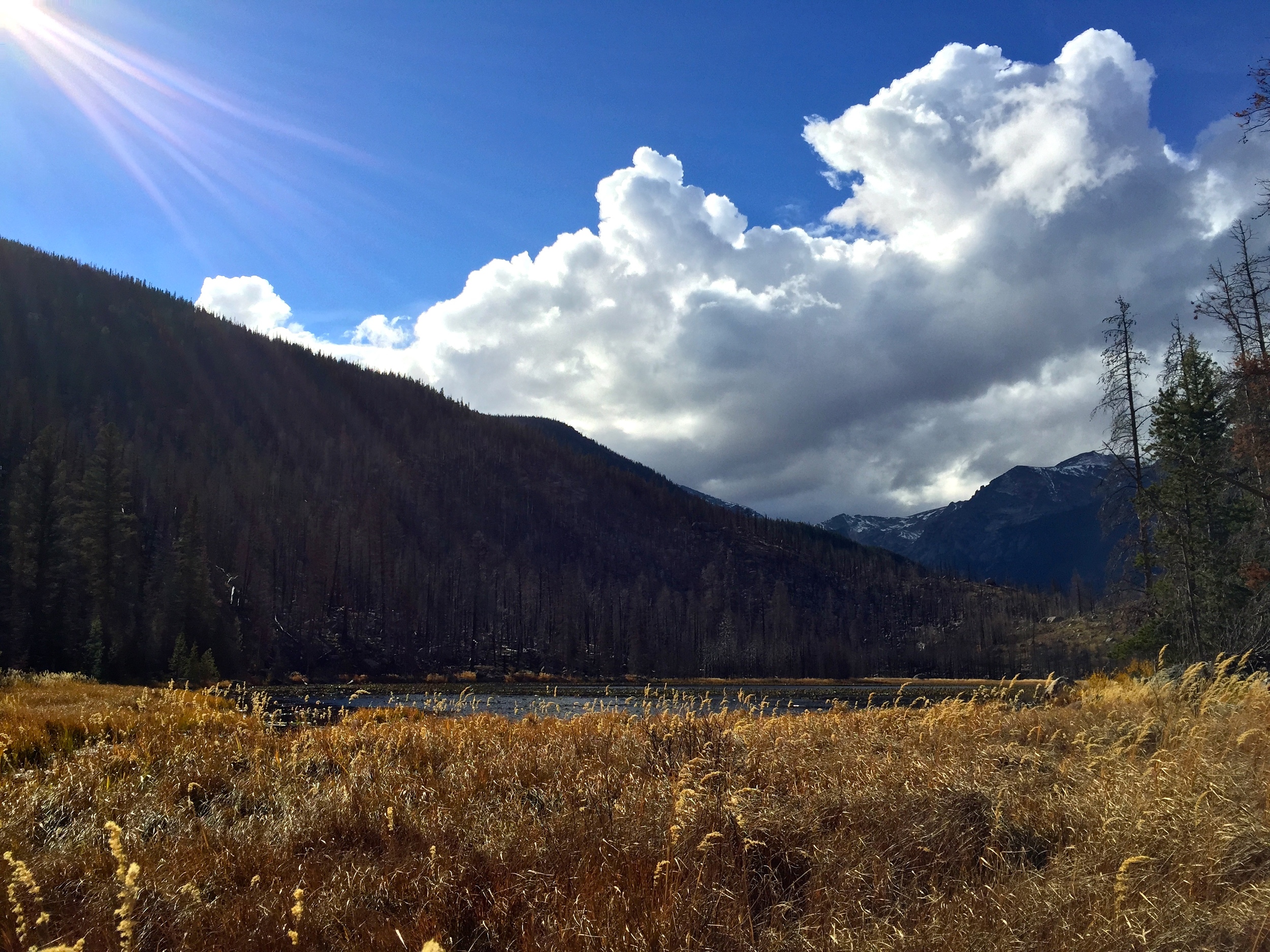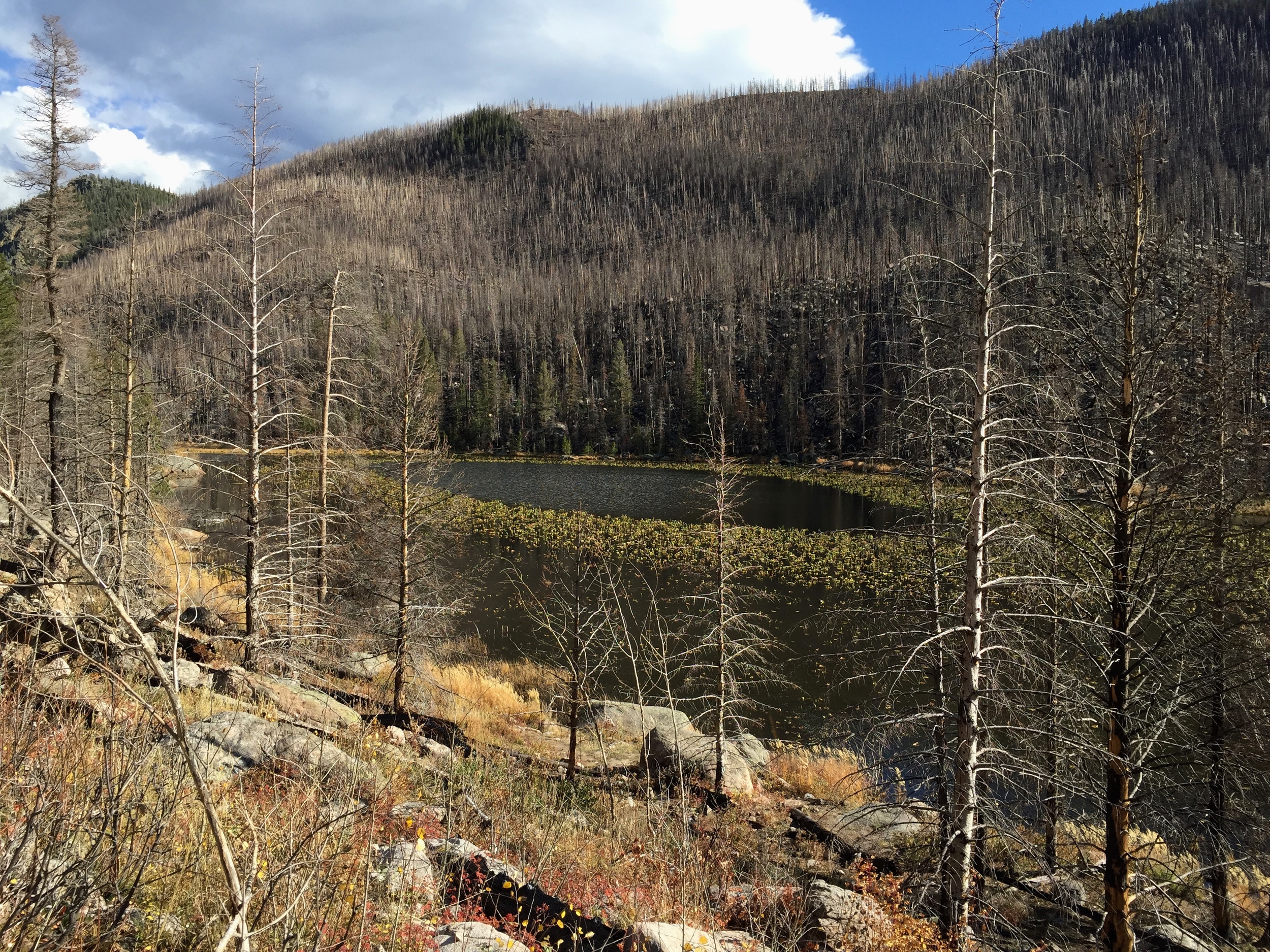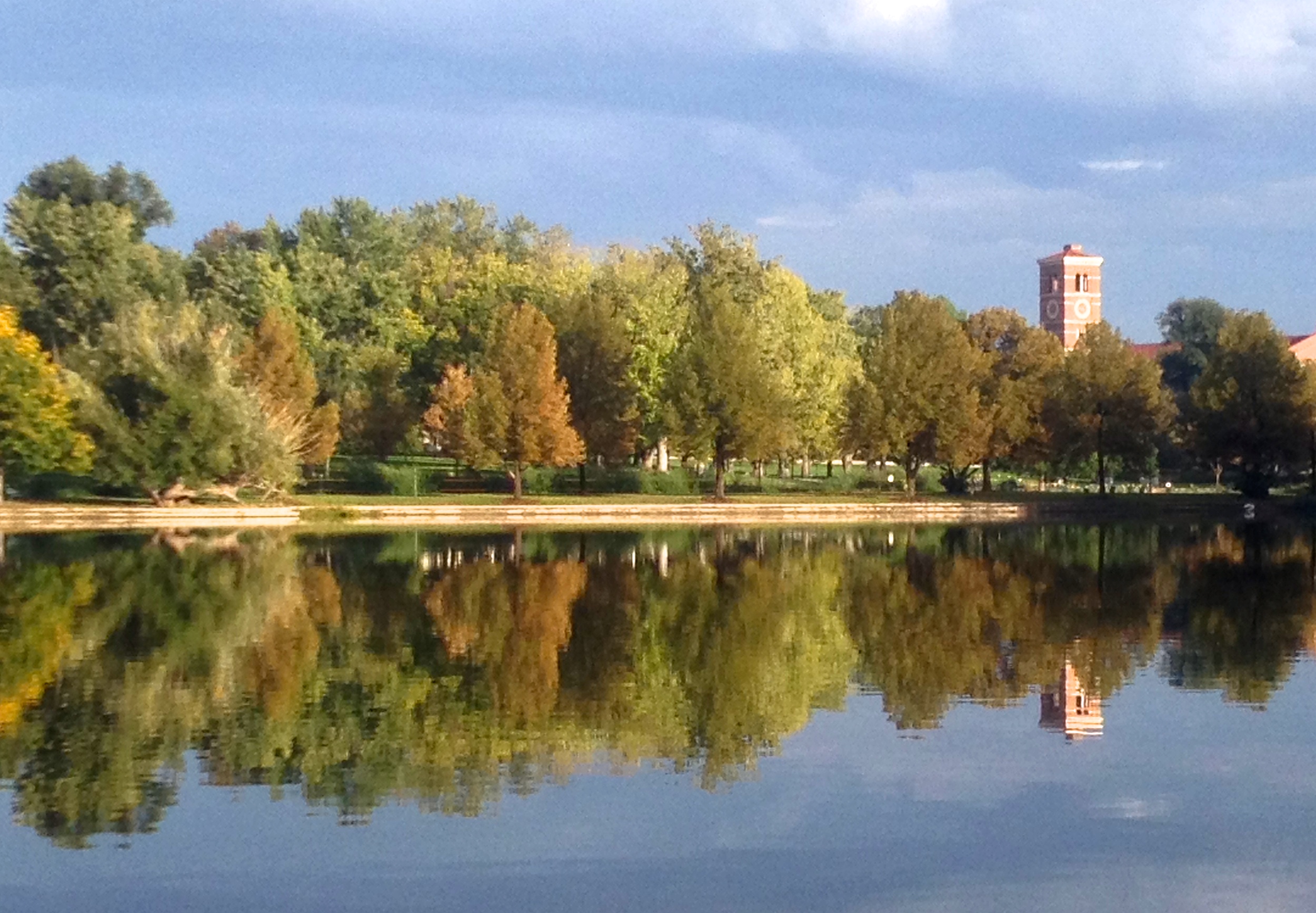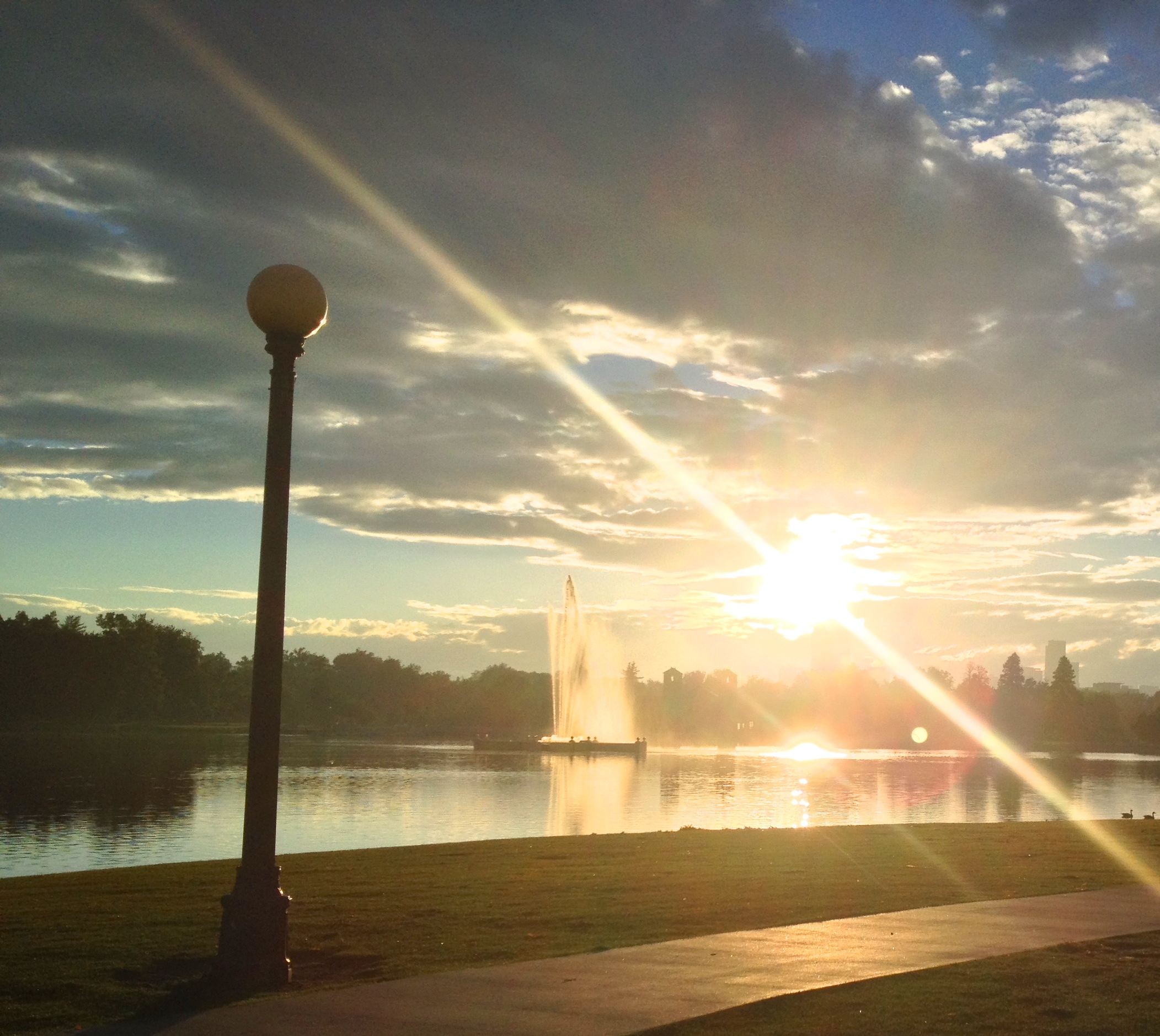Birds of Prey
/Barr Lake State Park
A surprise overnight snowstorm layered Denver in a four-inch coating of wet, heavy snow last night, but driving east led me and my running partner, Taylor, into the prairie where less snow had accumulated and trails, though not dry, were in fine shape for a midwinter morning run. Barr Lake State Park has become a winter-time go-to destination for an escape from urban Denver and running on concrete and pavement. The plan today was to loop around the namesake lake of the park with the hope to get a glimpse of the park's most famed residents: the bald eagles.
We pulled into the snow-covered parking lot under gray clouds reminiscent of the long overcast winters that typified my Wisconsin upbringing. Hats pulled down, gloves pulled up, and we stepped into the icy air and braced for our 10 plus-mile run on the Perimeter Trail. (Note: The lake can be run as an 8.8 mile route, though we extended the run with some adventures on the side paths that depart from the main trail at regular intervals.) Heading clockwise on the gravel road we approached a boardwalk extending into the lake. I asked if Taylor would be up for some exploring during the run and he was willing to oblige. So we tromped out to the end of the dock for a view across the expanse of ice and open water at the full span of our route. It was going to be a long run... but the breeze was mild and we warmed up quickly with our exertion. After about a mile we passed the Nature Center, closed at this early time of day, and opted for the single track shore line path (Niedrach Trail) that dips down to waters edge. I'd hoped the boardwalk would be open but fencing and plywood blocked the way, likely a safety decision by the park as the narrow bridges could be slippery during this season. Back to the wide gravel service road that serves as the main loop trail we continued meandering around the south side of Barr Lake between the lake itself and the Denver & Hudson Irrigation Canal.
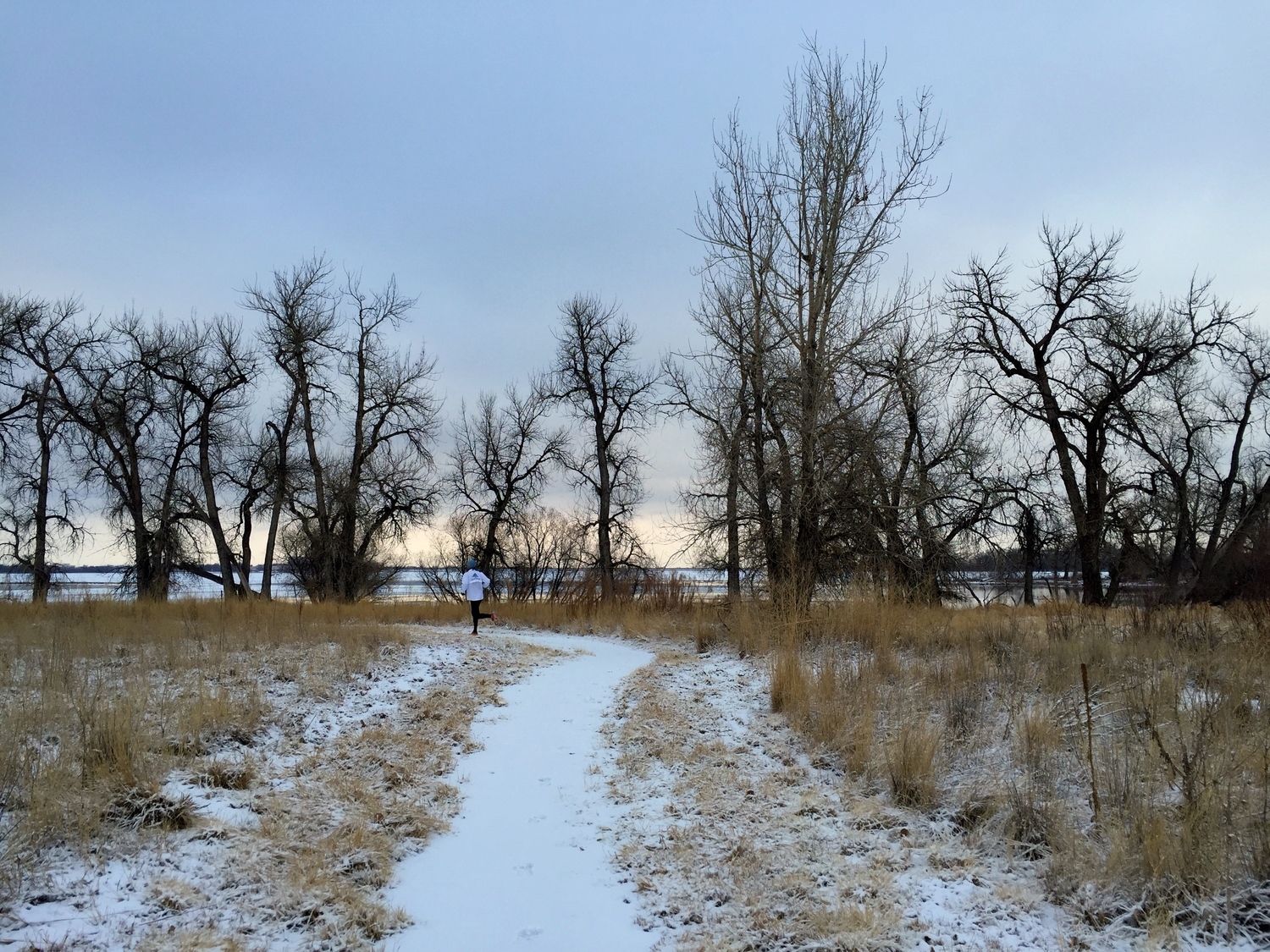
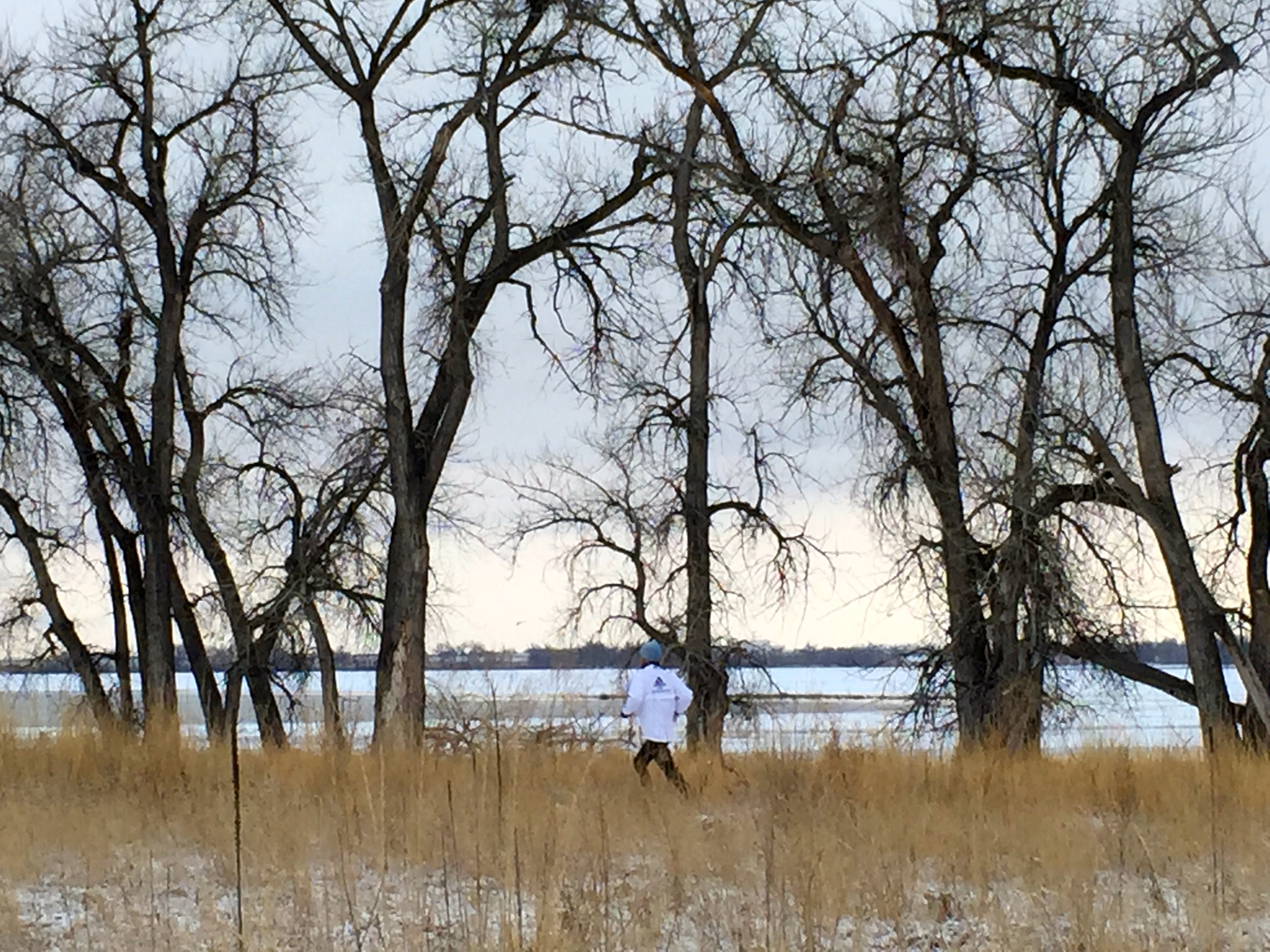




As we continued around the lake and some of the low-lying wetlands surrounding it, we took every opportunity to poke down the side trails that wind deep into the marshes and cottonwood groves that ring the lake. One highlight included the gazebo out at the far end of a long boardwalk that offered views into the protected rookeries in the lake. Bald eagles filled the trees across the lake and were easily spotted through the binoculars installed in the gazebo. Other birds like double-crested cormorant and great blue heron live in this area of the lake. A piercing overhead screech, drew our attention skyward as a perturbed hawk flew to a distant tree upon our approach. The birdlife was on full display at this time of year and this time of day. Waterfowl honked and quaked raucously, gulls and shorebirds spun in the air above the lake, and passerines flitted into deeper shrubbery as we continued our run along the western side of the lake. The trail popped up to a right-of-way along the railroad tracks before ducking back towards the lake and skirting a quiet neighborhood set off to the left. It was along this stretch that we found ourselves nearly nose-to-beak with some of the bald eagles that call the lake home. On a dead snag not far from shore an eagle posed on a branch. I reached for my phone to snap a quick pic and was lucky to steal one just as the bird took flight!
The eagles have a long history at Barr Lake State Park. Certainly they have taken advantage of the reservoir since it's beginning over a century ago, but in 1986, years after the lake was designated a state park and cleaned up from pollution introduced during the 50s and 60s, a pair of eagles decided it would be their permanent home and began building a nest, one that remains today, after nearly 30 years! After a few years they were successful in hatching and fledging their young and the population has consistently grown in the last decades to include dozens of eaglets and mature birds. At this time of year the eagles are completing their nests while courting mates in preparation for February egg laying and incubation. To see what eaglets survive will require a return to the park in May and June when the new eagles are getting ready to leave the nest.
At the northwest corner of the lake, we stopped to explore the Bruderlin House, originally built by Swiss immigrants in 1889, and then restored about 15 years ago by the Rocky Mountain Bird Observatory to serve as their headquarters. A number of interpretive signs around the landscaped yard invited us to consider various aspects of the bird behavior seen and heard during our visit. At this point we had two paths to choose from. The low road along the bottom of the dam that creates the lake, or the high road across the top of the dam. We opted to split the difference by running the low road to the main outlet canal of the lake then charging up the stairs on the face of the dam to the top. From the dam we could see across the length of the lake and review the route we had traversed and the sights we'd seen. After leaving the dam we quickly concluded the loop and the run. We agreed that were it not for the diversity and activity of the wildlife, the run would have been entirely average, but it's amazing what a few birds of prey can do! This trip to Barr Lake stands out as one of the less forgettable wildlife experiences I'm likely to have.
Your turn
From Denver: From I-25 and Speer Blvd travel north on I-25 to the junction with I-76 heading northeast from Denver. Follow I-76 for 17 miles to the Bromley Lane exit in Brighton. Turn right (East) to follow Bromley Lane (becomes 152nd Street) where signs will begin to direct you to the State Park. After 0.8 miles turn right (South) on Piccadilly Road to the park entrance, on your right after 2 miles. Park entrance fees ($7) re collected at the entrance station and follow the signs to the boat ramp parking lot where the run begins. The park is also popular with anglers, equestrians, birdwatchers, families, hikers, and archers. I recommend visiting in the mornings and evenings when temperatures are most comfortable year round and wildlife is most active.
P&P Extra
This week Colorado is hosting the Alpine Skiing World Championships at Beaver Creek Ski Resort, and though no bald eagles are likely to be spotted, they will be plenty of airborne animals as ski racers average 60 miles an hour to win the down hill ski race. The BIRDS OF PREY racecourse is legendary for its difficulty and spectacular crashes as it flies over jumps named after peregrines, goshawks, screech owls, golden eagles, harriers, and red tails. Though it is unusual for the event to serve as the World Championship, it does host an annual World Cup event that has become a Colorado tradition.





